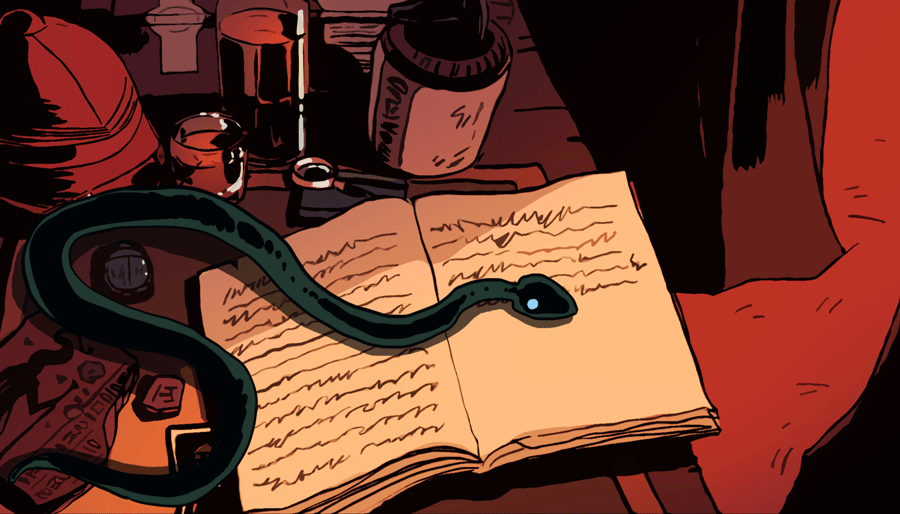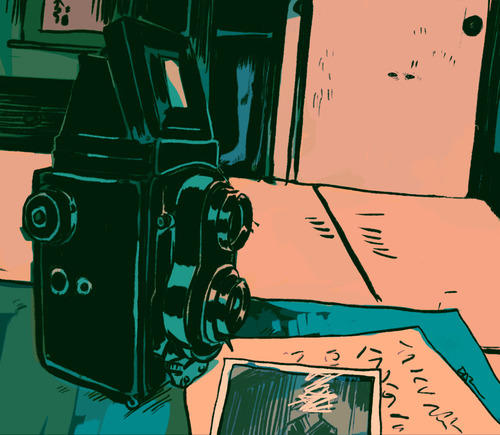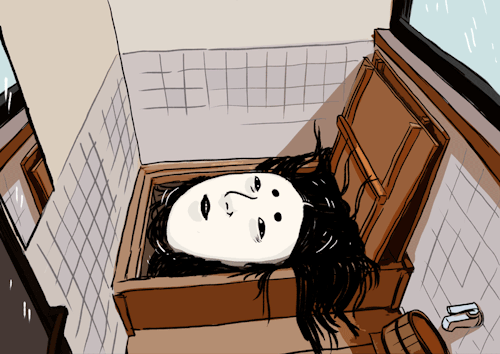After an intermezzo in a strange and warm dream about bathtubs and occult mysteries, we awake on our river boat, coated in thick pelts, looking out on the waterlogged plains, and we remember that there is a cold and forlorn story to tell: the story of the Thawing Kingdom.
I've talked about the kingdom, and how it came to be. About its people, and its not-people-anymore. About the mysterious swan knights that wander the land and the half-thawed that approach in the shadows of a fire lit carelessly. These are all things that came from before the ice, or even from the ice itself. Now, let's chat about things that only arrived in the kingdom once the ice had already thawed. About the Great Drakes, and the lesser drakes small enough that the Great Drakes don't bother eating them. About the devils, who have been nomads ever since the Gods died in Draailant.
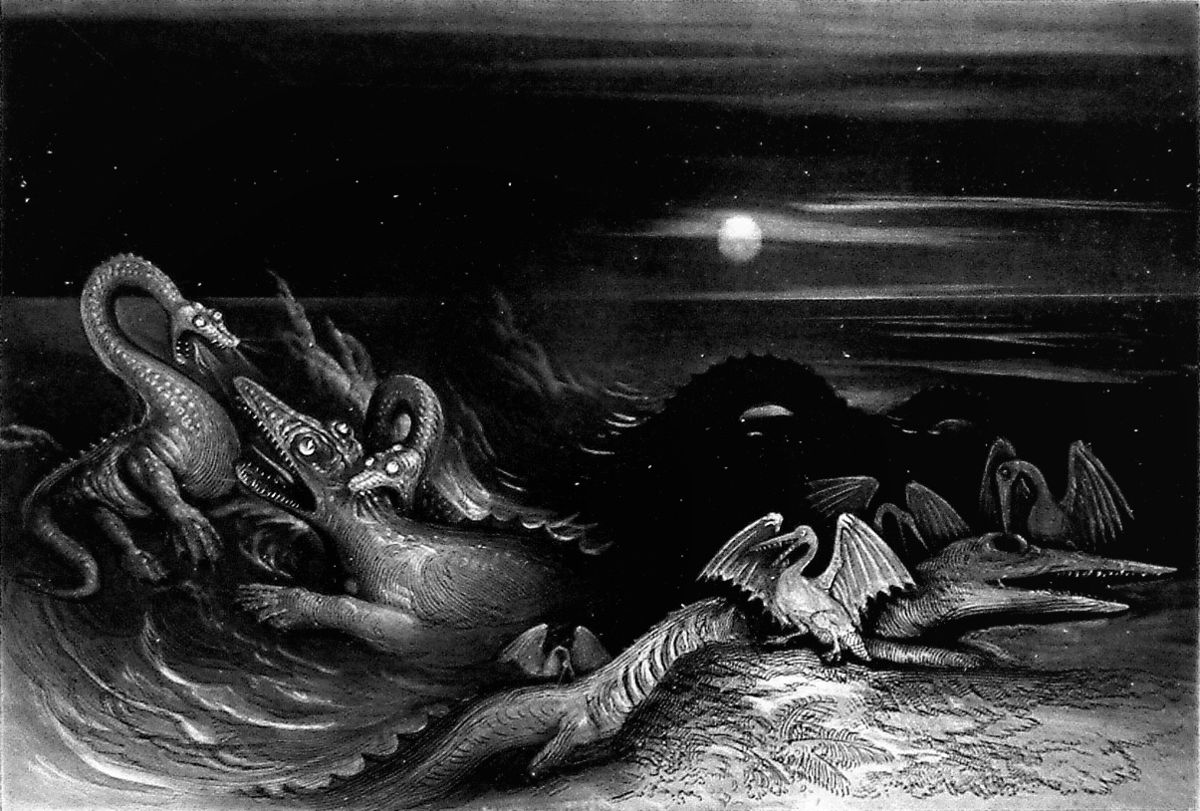 |
| From Thomas Hawkins' The book of the great sea dragons. |
Drakes are squamous, somewhere in between fish and reptile and protean toothed bird. They swim in the sea, crawl over the land and some fly through the air. They lay eggs that are hard as a cannonball, and they breathe out sickening fumes from the pounds and pounds of fish digesting and rotting in their crop and stomach. These rancid gases are enough to turn even the most aged fishmonger sick on the spot, and have an incapacitating effect just by being breathed in. Drakes are monsters through and through. They thrive where they can live off carrion, fish, birds, anything really. The Great Drakes constantly fight amongst each other, eating each other's fat and squalid bodies to become even more greater in mass. Their mating ritual is the arriving at an impasse, after days of terrible fighting, where neither can quite manage to finish the other off. And the small drakes stick to the Great ones like sycophants, feeding off the debris of their kills, stripping their leftovers bare. They mainly live on shores, beaches, cliffs and offshore rock formations, but flying ones have found the lakes and swamps of the Kingdom and lost their wings there, beginning anew their process of violently eating each other in an ur-soup to become bigger and bigger and bigger.
Drakes don't give themselves names, and only speak the language of food and violence. Do not mistake this for stupidity. They can show a crocodilian cunning, it's only that most of the time they're so big and strong and have so many teeth that they don't need to. The flying drakes that live inland are usually lesser ones. The Great Drakes never developed wings. There is a terrifying tale however of Bulgro, a Great Drake carried through the air by more than a hundred lesser drakes, holding on to his many spikes. You should hope never to meet him. Lesser drakes vary in size between a large dog and a small horse. If you encounter a Great Drake and they are the size of your house you are probably lucky.
Flocks of lesser drakes are a terrible plague. They can harass or even carry away villagers, ruin crops with their noxious guano, eat livestock, and generally shit on everything treasured and sacred like the cow-sized crocodile fish pidgeons that they are. Their nests could make a mountain pass or a swamp dangerous. They could be turning the water foul. Knights typically fight these, but tend to be underdogs.
Great Drakes eat sea ships. Fisherboats, explorers, that kind of thing. However, they can also live at the centre of a horribly putrid swamp, which was once really just a wetland but became poisoned with carrion, fumes and guano from the Drake. In the old mostly ruined cities they could live in the sewers, breathing squalid 'life' back into those tunnels. They tend to be far, far more stationary than the lesser drakes, but they are extremely formidable. Only a handful of Great Drakes have ever been killed by humans (usually they do it amongst themselves). They are more of an environmental disaster than a combat opponent.
Devils are different. In the time before the frost, devils were servants of the Gods tasked with carrying out evil to remind people what it looks like, and with the tempting of humans into evil, to test their loyalty to the morality of the gods. However, while the kingdom was encased in ice something happened.
 |
| By Peter Ferguson |
Draailant killed the Gods.
It's still unknown how they did it, what terrible weapon they must have created. But they did do it. And so, the devils became relicts, freed from their service and marooned with no purpose, no home, no language. Nothing except for the newfound freedom from their task. But Draailant, out for revenge, cared not for the sudden free will of the creatures that had been the Gods' instruments of terror for centuries. Nowadays only the smaller devils remain. The great horned ones were hunted and butchered like whales. The flaming torturers of yore died impaled on their own tridents. The pontiffs of the new Machine Church wear jewels of black devil ivory. Gods lost, and humans won.
The remaining imps, fiends, gremlins and hellions are now a furtive wandering folk, usually speaking a pastiche of the languages they've picked up from humans along the way. Many of them have fled to the Thawing Kingdom, because in Draaylant they are treated like vermin. They come in many sizes, but almost none of them are bigger than a small human. They're scavengers, wandering merchants, troubadours, theatre players, or do what little magic they have left for food and coin. You'll likely encounter them in nomadic caravans that offer many small goods and services, or as traveling troupes. They're never sellswords. Ironically, devils are likely the least violent race in this world. Well, they are now.
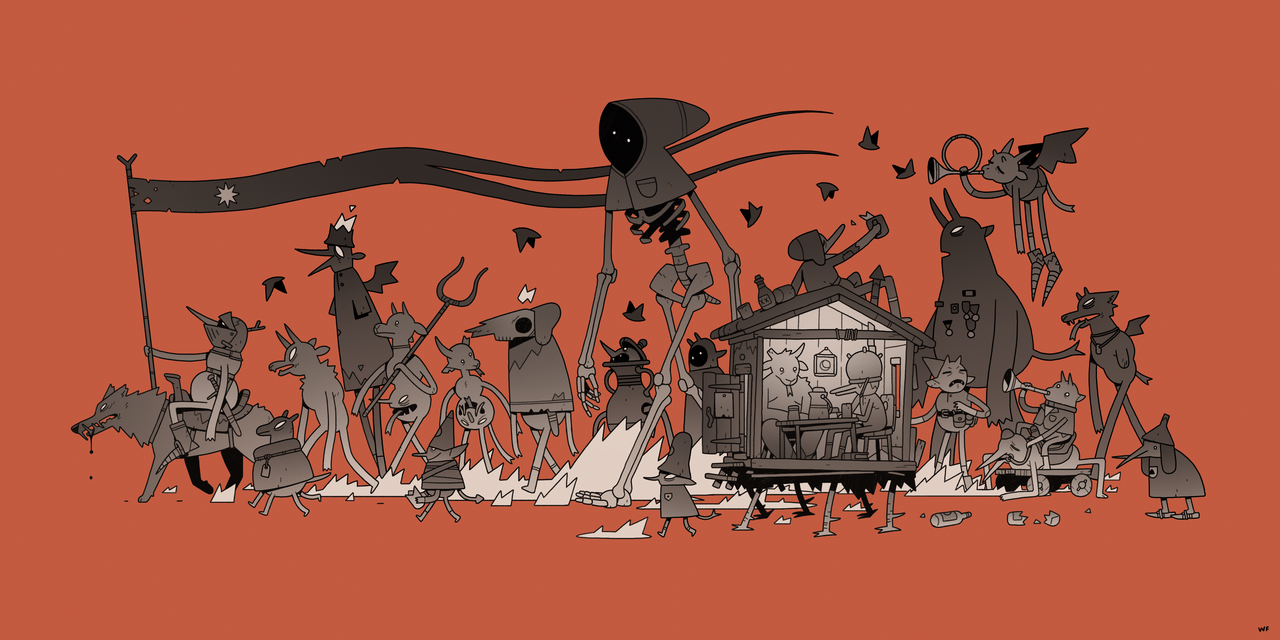 |
| By Wren Farren |

